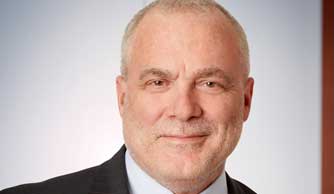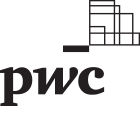Ideas That Work:
The Future of the Healthcare Industry |
|
The Future of Health Is More, Better, Cheaper. The democratization of healthcare is underway. Consumers are increasingly willing to abandon traditional care venues for more affordable and convenient alternatives. Within a decade, the health business will look and feel much more like other consumer-oriented, technology-enabled industries. It will have its own iconic brands, companies that give consumers an easy way to access information, doctors, and treatments; provide them with a variety of services and products at a variety of prices; and centralize their care through user-friendly interfaces. by Vaughn Kauffman and Trine Tsouderos
|
|
advertisement
Oct. 18–30, 2015
What does it take to become a successful GM? It's no longer about managing the work – but rather about managing diverse teams and multiple business functions. Shorten your learning curve with the General Manager Leadership Program, and develop the skills needed to achieve excellence as a cross-functional executive. Learn more and apply on our website.
|
|
From Fee-for-Service to Fee-for-Value. As part of an effort to bring government spending on healthcare under control, Medicare is moving from a model where all services are paid regardless of efficacy to one where outcomes and the value of service provided matter. Instead of simply reimbursing providers according to set formulas, the agency has been experimenting with alternative payment models, such as accountable care organizations, bundled payment arrangements, and medical homes. by Joyjit Saha Choudhury and Jay Godla
|
|
|
Mark Bertolini’s Preventive Disruption. On January 12, 2015, Aetna chairman and CEO Mark Bertolini announced a raise in Aetna’s minimum wage to US$16 per hour. For the 5,700 employees who stood to benefit, this meant an average pay increase of 11 percent; some saw an increase of 33 percent. The pay hike showed Bertolini to be a culturally astute leader, one who is keenly aware of the changing nature of the healthcare industry and the pressure on health insurance companies to revise their business models. by Jon Katzenbach, Gretchen Anderson, and Art Kleiner
|
|
|
|
|
FEATURE
by Carl Dumont, Sundar Subramanian, and Christoph Dankert
Thanks to innovations and disruptions in technology and changes in legislation, the U.S. healthcare sector, which represents one-sixth of the nation’s US$17 trillion economy, is experiencing a number of upheavals in its service and payment models. Mobile communications and information technology are changing the way healthcare is delivered, consumed, and managed, and healthcare’s locus of delivery is shifting out of the doctor’s office and the hospital and into everyday life, through retail clinics, home-based diagnostics, and telemedicine. These factors have all led to the creation of immense opportunities for companies in the healthcare industry, and for new entrants hoping to break into the sector. These enterprises can analogize themselves to one of two professions that thrive in actual gold rush environments: gold miners and bartenders.
|
|
LOOK
 7 Surprising Disruptions 7 Surprising Disruptions
Based on Strategy&’s 2015 Industry Perspectives, this slide show reviews the trends and disruptions various industries, including healthcare, should be expecting this year. For healthcare, weak margins, reimbursement pressure, rising underlying costs, and greater consumer decision-making power are all factors driving the emergence of a completely new marketplace, one in which improvements in both care and financing will be needed to assure success.
|
|
“Cancer-drug prices are rising faster than the prices in other sectors of healthcare, drawing concern from patients, physicians, and policy researchers... Our results suggest that the price of cancer drugs is independent of novelty [and] that current pricing models are not rational but simply reflect what the market will bear.” —Sham Mailankody and Vinay Prasad, JAMA Oncology, April 2015
|
|
|
|
MOST POPULAR
Is Your Strategy Stuck?
Rita Gunther McGrath uncovers how companies can tap into more dynamic tools to develop better strategies for how and where they’re competing.
|
Your Leadership Summer
Use time away from the office to stimulate your development, and have fun doing it.
by Eric J. McNulty
|
Beyond Bias
Neuroscience research shows how new organizational practices can shift ingrained thinking.
by Heidi Grant Halvorson and David Rock
|
|
Stay connected with s+b
If you have contacts who might enjoy this newsletter, forward this email. They can register to receive it here. |
|












